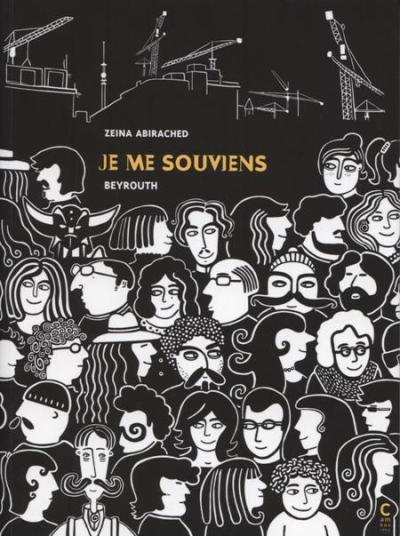December 15th, 2013 § § permalink

Rick Kleffel is a very, very awesome guy. Or in this case, I should say, Ferry, Ferry awesome! One of the hardest-working, most indefatigable voices in indie coverage of fiction—spec and more—he rolls in the very very first review of my latest full-length prose translation, Jean Ferry’s The Conductor and Other Tales, at his site The Agony Column:
Ferry’s prose pieces are short and often embrace a tart spirit of self-contradiction. He’ll et the reader up with an lavish and sometimes graphic description of a place or an event; a trip to Easter Island — and then deny the truth of what he’s written. He makes it real for the reader, then suggests it is not. Of course, where the lies begin and end is the question, and the import of the something being “true” as well. Ferry’s stories reflect a deep and thoughtful conception of the reading experience, and he uses this to a degree as a plot point…
This is a perfect one-a-day antidote for reality in all its clunky, gory glory. Consider these seeds, prose to be planted in your mind and left to grow very, very wild in the fertile soil of your unconscious life. It’s possible the best effects of reading this book may not be accessible to conscious thought.
Kleffel continues his coverage with a podcast interview. It was a thrill to be quizzed by such an insightful and perceptive reader; in typical esprit d’escalier fashion, my mind was predictably buzzing with add-ons, caveats, and quips hours after the interview. Excerpts from the interview were also broadcast on KUSP’s 88.9 Central Coast Public Radio (6-7 PM PST, December 8th). On Rick’s show there, I had the huge honor of joining Susan Stinson, Jeff VanderMeer, and Jonathan Lethem.
Thank you, Rick!!!
December 13th, 2013 § § permalink
From the minds that brought you
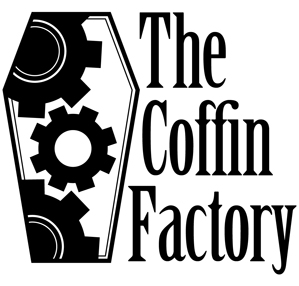
now comes an exciting new venture in literary magazines:
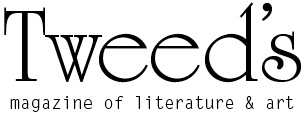
After five amazing issues that took The Coffin Factory from newbies to playas overnight–seriously, the ground these guys have covered, it’s like they were wearing seven-league boots–the Coffin folks are changing the name of their estimable publication and relaunching it as Tweed’s magazine of literature & art. The goal: to embrace a larger audience of readers, writers, and artists.
I mean, The Coffin Factory featured: Noam Chomsky, John Banville, T.C. Boyle, Joyce Carol Oates, Aimee Bender, Lydia Davis, Bonnie Nadzam, Charles Simic, Roberto Bolaño, José Saramago, Jorge Luis Borges, Enrique Vila-Matas, Andrés Neuman, Jean Ferry, László Krasznahorkai, César Aira, Bernard Quiriny, Milan Kundera, Rabindranath Tagore, Maurice Pons, Edith Grossman, Natasha Wimmer, Katherine Silver, Margaret Jull Costa, Linda Asher… and that’s just the writers. Don’t get me started on the artists!
All this without any corporate backers or funding fairy godmothers!
But now they need your help. Tweed’s is running an Indiegogo fundraising campaign to help launch the new magazine and are asking for your support with this independent artistic project.
Please visit Â
our Indiegogo page  to learn more aboutÂ
Tweed’s and
  why we’re making the switch. And while you’re there, browse our irresistible selection of perks, including book bundles from our favorite publishers, autographed copies of magazines by contributors, signed books, tote bags, flasks, notebooks, and more.
Who’s already in Tweed’s? Edwidge Danticat, John Freeman, and Sjón will be in the first issue, which we plan to release to bookstores nationwide in March, once the Indiegogo campaign has concluded.Â
December 11th, 2013 § § permalink
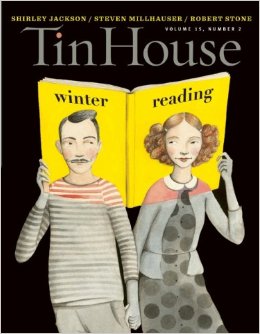
Looking to cozy up in a comfy chair with a good story? Now out in Tin House #58, their annual Winter Reading issue, is Belgian fabulist Paul Willem’s tale “The Cathedral of Mist,” in amazing company with fiction by Steven Millhauser and Shirley Jackson, an interview with Robert Stone, and Rachel Monroe’s appreciation of May Sarton!!
Here’s an excerpt from the story, which is available in is entirety online:
One day the architect V., who was very well-known in Belgium before the First World War, grew tired of concrete and began to hate granite. He had noticed that no matter what one did, stone was stone. Stubborn, it fulfilled only its destiny, which was to endure. It focused its immense, compact strength inward, on itself. And pitted all its inertia against those who tried to distract it by moving or carving it. It loathed the verve church spires lent it. It abhorred all winged things. It suffered in the wind. And should one raise it to a temple pediment, it seized every chance it had to return to the earth. That is why columns topple and even the most lasting monuments slowly sink into the soil, where stone reunites with its beloved darkness.
The architect V. renounced the use of stone. After years of meditation, he built a cathedral of mist.
Willems (1912-1997) belongs to the final generation of great Francophone Belgian fantasists of Flemish descent. He published his first novel, Everything Here is Real, in 1941. Three more novels and two story collections from his later days bracket his career as a playwright, for which he was best known in his lifetime. Donald Friedman’s translation of his late novella The Drowned Land was nominated for the Dublin IMPAC Literary Award and published with Suzanne Burgoyne’s translation of his play La Vita Brève in an edition from Peter Lang in 1994. I have published his work in
- Tin House #50: “The Horse’s Eye†(not available online)
- Subtropics #13: “Cherepishâ€Â (not available online)
- Scheherezade’s Bequest #15: “The Colors of the Worldâ€
December 9th, 2013 § § permalink
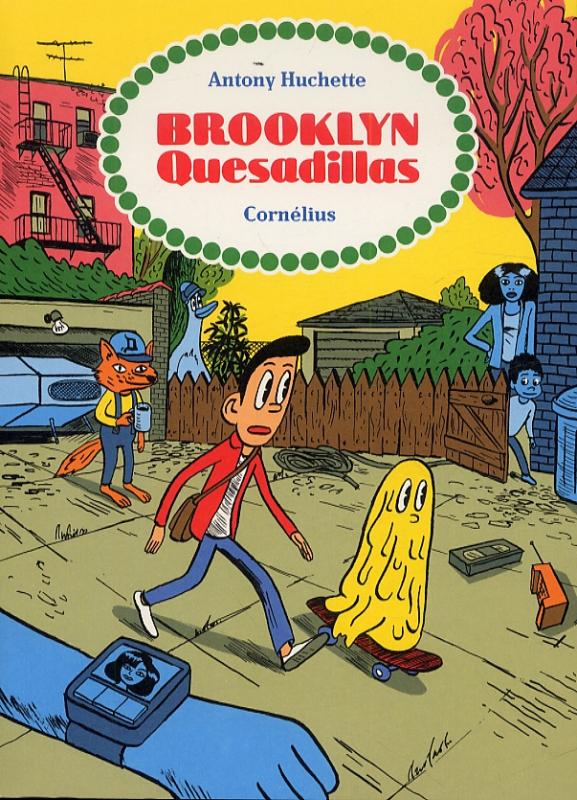
Now out from Canadian indie Conundrum Press, a quirky little title I worked on over the summer: Antony Huchette’s Brooklyn Quesadillas! If you’ve ever wanted to see a man turn benignly into sentient melted cheese, watch a TV show hosted by a coffeepot, or wondered where forgotten sitcom lovelies from the ’80s live, forever young (hint: an island off Manhattan, with their rejuvenating baths), then this is the book for you.
This English edition w be launched at Comic Art Brooklyn, November 9, 2013. Check the blog for more event details.
Quesadillas is the second book in the enterprising Conundrum’s International Imprint, after Chihoi’s The Library.
Huchette is a French artist and animator who makes his home in Brooklyn. He is also a musician and DJ. His previous book is La marée haute (6 Pieds sous terre). Brooklyn Quesadillas was published in French by Cornelius and this translation represents his first work in English.
December 7th, 2013 § § permalink
December 5th, 2013 § § permalink
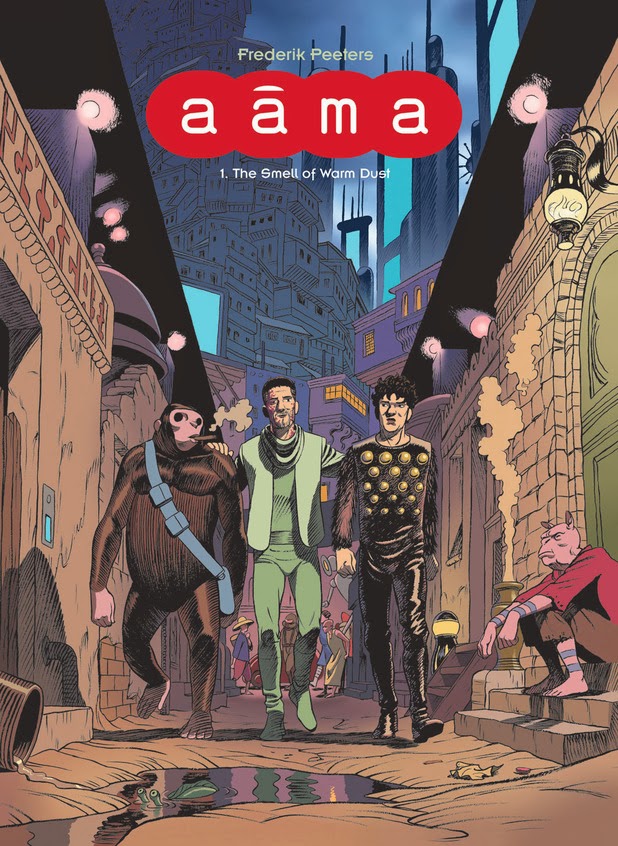
The first volume of Frederik Peeters’ SF epic Aama is now officially available in English, if only the UK (at the moment). This far-future space epic in five volumes, reminiscent of the work of Stanislaw Lem, won the best series award at Angoulême festival this year.
The first volume, The Smell of Warm Dust, finds Verloc Nim waking in an unfamiliar crater with total amnesia. He learns about his unhappy past from his old diaries and his brother’s robot ape, Churchill. His life had been in freefall: he’d lost everything because he refused to be technologically upgraded. But now he’s on a mission to another planet to retrieve a biorobotic experiment called Aama.
Peeters has been nominated at Angoulême in the best book category five times. He lives with his wife and daughter in Geneva. Publisher SelfMadeHero is fully invested in this star of contemporary French comics, having earlier brought out his works Sandcastle and Pachyderme. The current US release date for Aama Book I is March 2014.
December 3rd, 2013 § § permalink
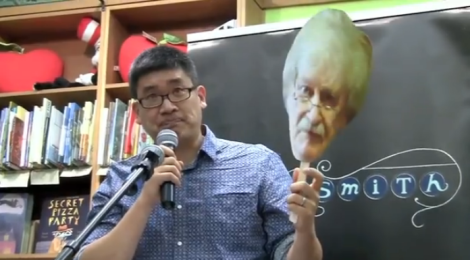
In late September, I read from Georges-Olivier Châteaureynaud’s story “An Occasional Icarus†at The Booksmith in San Francisco. It was part of a promo event for Kate Bernheimer’s recent retold myths anthology, xo Orpheus, and included Karen Tei Yamashita, Zachary Mason, and Anthony Marra. Evan Karp of Litseen covered the merry event, which included yours truly waving around a large head of his author. Here as some pics, courtesy screencaps from Evan’s video and my wife, Nicole M. Taylor.

I didn’t see anyone working harder than Evan that night. It was my first encounter with Litseen, and I was impressed. In the website’s own words, Litseen is
a resource for anyone interested in Bay Area literature. In addition to the daily calendar of events, which we update weekly using our Hub and daily as events come in, we go to events and film them and sometimes talk about them. We also give awayfree books in exchange for reviews and run a podcast, along with some other occasional features: Punk the Muse and Hello, Typewriter, for instance.


I’d like to take this chance to thank (extremely belatedly) Sofia Samatar for her shrewd and wonderful review, at Strange Horizons, of Châteaureynaud’s Small Beer collection A Life on Paper—a reminder of why we should read the author:
The weirdness is never left to stand on its own. The tale always takes one more step, yielding powerful imagery or psychological insight… The startling moments and unexpected turns packed into these extremely spare stories, many of which are less than five pages long, make for a reading experience that is disorienting in the most rewarding way, subtly creepy, and often breathtaking…
I’d argue that the significance of Châteaureynaud’s comment lies in the slippery nature of the territory he claims for himself…
[T]here’s no taint here of weirdness for its own sake, of the sterile pursuit of untried ways to put harpies and abominable snowmen together just to make something sort of shiny. Rather, there’s a sense of a long career (the stories in the collection were originally published between 1976 and 2005) during which a writer has been consistently unafraid to use anything, new or old, that would serve his purposes. The results are almost uncategorizable, providing both the pleasure of curling up with a ripping good yarn, and the haunting disequilibrium of the best slipstream…
In every story, wait for the jolt: the moment when the steamboat stops chugging lazily up the river, and takes to the air.

December 1st, 2013 § § permalink
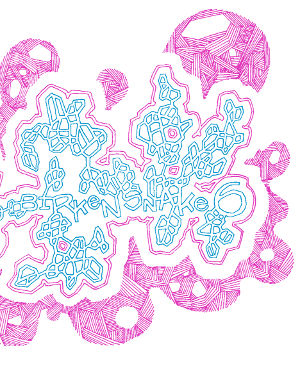
As alt-lit nerds may have heard, the ever-lovingly handcrafted Birkensnake produced 7 different versions of its 6th issue, each curated by a different editorial team. H.V. Chao’s “The Museum of the Future” appears in the version edited by Diana George and (the late) Hedy Zimra.
An excerpt:
We are delighted by the miscellany of moving walkways in the Hall of Transport: walkways encased in corridors of colored glass, walkways under sectioned canvas awnings, walkways rising at steep angles, walkways corkscrewing slowly floorward from great heights. Shadows dapple us, waft and ripple past, and for a moment we might be forgiven for believing ourselves on the ocean floor, so various are the airships that dally and meander overhead: the fanciful airphibians, the discopters, the gyroyachts, the flying wings. Busy ogling the countless conveyances, we realize only belatedly that although we have stopped in our tracks—are, in fact, standing stock still—we have not ceased to advance: beneath our feet, our own moving walkway bears us imperturbably along, at a stately pace suited to admiring the sights without letting our eyes linger on any single one. For there is a secret the museum’s curators know well: it is in glimpses, flashes, shards that the future lodges most deeply in the heart, pieces of a dream our memories return relentlessly to reassemble.





